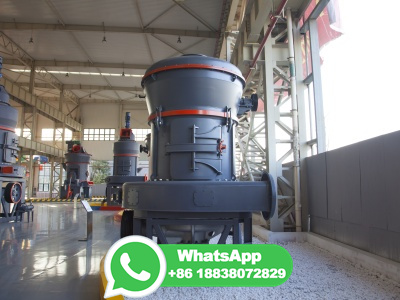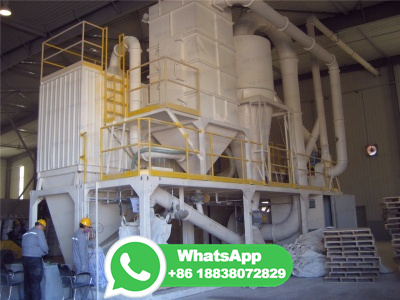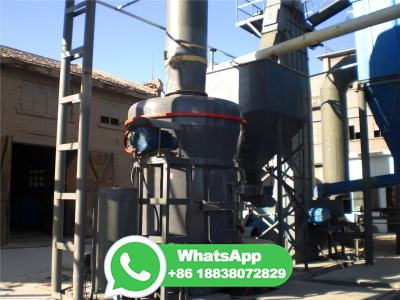
Mar 09, 2017 · 2 Introduction The sieve analysis, commonly known as the gradation test, is a basic essential test for all aggregate technicians. The sieve analysis determines the gradation (the distribution of aggregate particles, by size, within a given sample) in order to determine compliance with design, production control requirements, and verifiion ...
Get Price

Jan 24, 2013 · By the CT 382 definition, the maximum aggregate size is 3/4" and the nominal maximum aggregate size is 1/2". In the November 2011 version of CT 202, nominal maximum aggregate size is defined as "one sieve size larger than the first size to retain more than 10%."
Get Price
Oct 12, 2021 · Fine Aggregate Sieve Analysis. Fine aggregate sieve analysis is the method to determine the distribution of different sizes of particles in the fine aggregate samples. As the name suggests, a sample of fine aggregate is passed through different sets of sieves the quantity of material retained or passed is noted.
Get Price
The material has been identified as a ¾" dense graded crushed stone base aggregate. The sampling, aggregate properties, specific gravity, and sieve analysis were completed according to American Society for Testing and Materials (ASTM) and American Association of State Highway and Transportation Officials (AASHTO) standards.
Get Price
Sieve analysis is a method of determining the particle size distribution of coarsegrained soils (particle size greater than 75 microns). Introduction of sieve analysis of fine and coarse aggregates. In this method, the soil is sieved through a set of sieves. Sieves are generally made up of spun brass and stainless steel. As mentioned above ...
Get Price
Jul 12, 2021 · A sieve analysis can be performed on any type of nonorganic or organic granular materials including sands, crushed rock, clays, granite, feldspars, coal, soil, a wide range of manufactured powders, grain and seeds, down to a minimum size depending on the exact method. Being such a simple technique of particle sizing, it is probably the most ...
Get Price
The technique of sieve analysis is used for gradation aggregate for use in concrete and for other appliions. Aggregate is called bound material when it is mixed with cement or binding materials and referred to as unbound material when used without cement or binding materials.
Get Price
Dec 14, 2016 · The sieve analysis and the void content and density analysis, are some of the methods used in distribution and quality of aggregate analysis. The report base it analysis on an experimental set up in which both void content and density and sieve test analysis is carried out using crashed granite and crushed rock respectively.
Get Price
NOTE4—Where sieve analysis, including determination of material finer than the 75μm sieve, is the only testing proposed, the size of the sample may be reduced in the field to avoid shipping excessive quantities of extra material to the laboratory. Fine Aggregate—The size of the test sample, after drying, shall be 300 g minimum.
Get Price

Typical Sieve Analysis. 3/8" PEA GRAVEL (dry) ... 1030 #8 010 #16 015: Customers and Users of VitaCrete® Pea Gravel or Crushed Stone: Pea Gravel is semiround. Crushed stone is more angular. Both are clean, dried and free of organic/deleterious materials. Conforms to ASTM C33 specifiions for 3/8" aggregate. The color is ...
Get Price
Aug 11, 2021 · Coarse aggregates are available in several different size groups like 19 to mm (3/4 in. to No. 4), or to 19 mm (11/2 to 3/4 in.). The number and size of sieves that is selected for conducting sieve analysis is dependent on the particle size present in the sample and type of grading required. Sieve Analysis of Aggregates for Concrete
Get Price
Sieve mesh sizes are based on dimensions of the mesh size opening, or on the number of openings per linear inch. The two major standards governing test sieves and appropriate sizes are ASTM E11 and ISO 565/33101, both of which specify parameters for aperture dimensions, mesh size, and statistical variations. Opening sizes and mesh diameters for test sieves are often duplied between these ...
Get Price
Humboldt's aggregate testing equipment includes ASTM testing sieves, as well as air jet sieves and wetwashing sieves. We also have sieve shakers and material sample splitters for most appliions. Our testing equipment also includes abrasion testing, rock testing, moisture and .
Get Price
ASTM C 136, Standard Test Method for Sieve Analysis of Fine and Coarse Aggregates, Philadelphia, PA: American Society for Testing and Materials, 2001. has been cited by the following article: ... This paper investigates the effects on properties of concrete due to types of crushed aggregates alone. To observe the effects of crushed aggregates ...
Get Price
Sieve Analysis Test Procedure. The following is the test procedure for sieve analysis test of sand, Take the required amount of aggregate sample (for a sand (fine aggregate) minimum of sample is required.; Arrange the required no of sieves as per the contract .
Get Price
The results of sieve analysis of coarse and fine aggregates to be used in a concrete mix are tabulated below in form of weight of aggregates retained on standard sieve sizes. Determine and tabulate the following for each sieve size (please show complete calculations only for 3/8 inch sieve {3} only tabulating the values for all other sieve ...
Get Price
Jun 28, 2013 · A sieve analysis can be performed on any type of nonorganic or organic granular materials including sands, crushed rock, clays, granite, feldspars, coal, soil, a wide range of manufactured powders, grain and seeds, down to a minimum size depending on the exact method. Being such a simple technique of particle sizing, it is probably the most ...
Get Price
C117 Test Method for Materials Finer than 75m (No. 200) Sieve in Mineral Aggregates by Washing. C136/C136M Test Method for Sieve Analysis of Fine and Coarse Aggregates. D8 Terminology Relating to Materials for Roads and Pavements. D75/D75M Practice for Sampling Aggregates. D2419 Test Method for Sand Equivalent Value of Soils and Fine Aggregate
Get Price
Higher the value of FM,coarser will be the aggregate. Sieve Analysis 3 It also indies the surface area of the particles. Lower the surface area of the aggregate, the required amount of fresh cement paste to cover the aggregate particles will be less and thus less water is required. ...
Get Price
Nov 30, 2021 · Transcribed image text: SIEVE ANALYSIS (ASTM C136) Instructions: Please fill in step by step procedure or items lacking in conducting an experiment to test the particle distribution of an aggregate. Method Overview: • Determine dry mass of original sample • Wash through a 75 Hm (No. 200) sieve • Determine dry mass of washed sample • Sieve material Significance and Use The .
Get Price
Oct 27, 2020 · Sieve analysis of fine and coarse aggregate Sieve analysis forms the basic essential test for determining the gradation of aggregates. The main properties investigated in this test are the particle size. The particle size of the aggregate is given as a percentage of weight retained between consecutive sieves used in the test as shown in equation 1.
Get Price
Sieve Analysis determines the grading of an aggregate. Coarse aggregate is that retained on the #4 sieve and fine aggregate is that passing a #4 sieve. In a sieve analysis a series of sieve are used with smaller and smaller openings. Coarse aggregates are analyzed with standard sieves and fine aggregates with halfsized sieves.
Get Price
Feb 12, 2017 · How to Plot Semi Log Graph for Sieve Analysis. It is desirable to have a method of plotting, in which equal distances on the plot represent equal, ratios of diameter, or, if we had been able to match the Rittinger scale precisely in getting the various sizingscreens, the data would be plotted at equal intervals on the horizontal scale, thus compressing the curve at the large end, and ...
Get Price
Mar 15, 2018 · For crushed stone sand, the permissible limit on 150μm Is sieve is increased to 20%. This does not affect the 5% allowance permitted. It is recommended that fine aggregate conforming to Grading Zone IV should not be used in reinforced concrete unless tests have been made to ascertain the suitability of proposed mix proportion. Sand Test Report.
Get Price